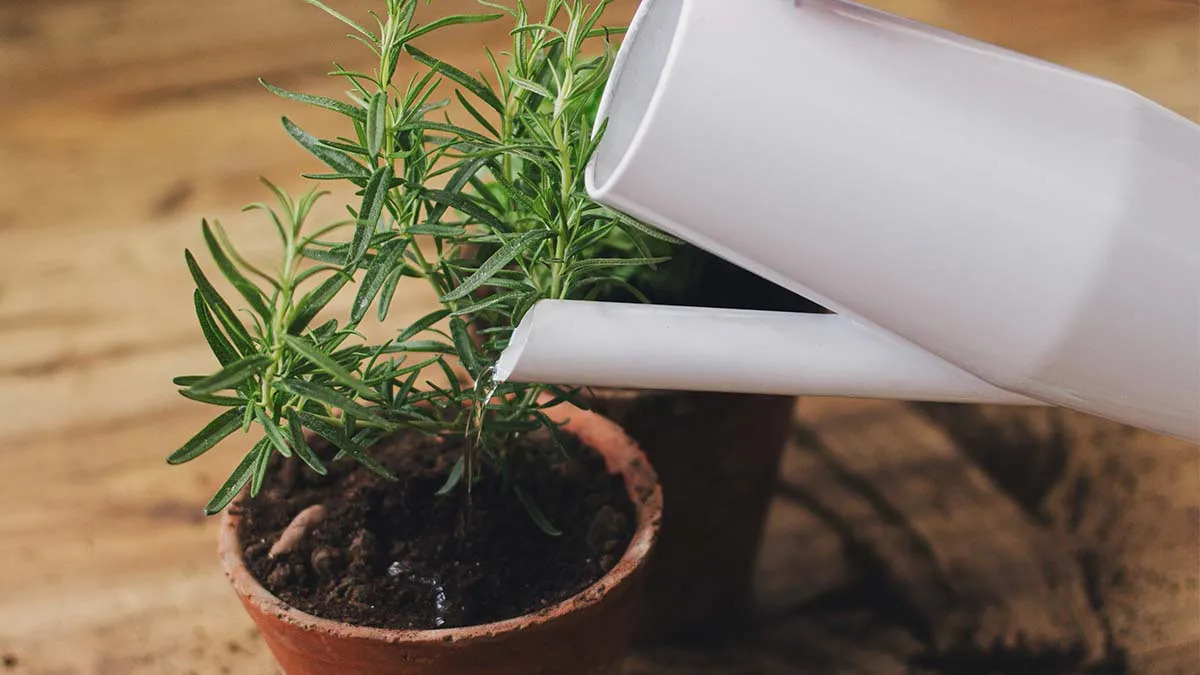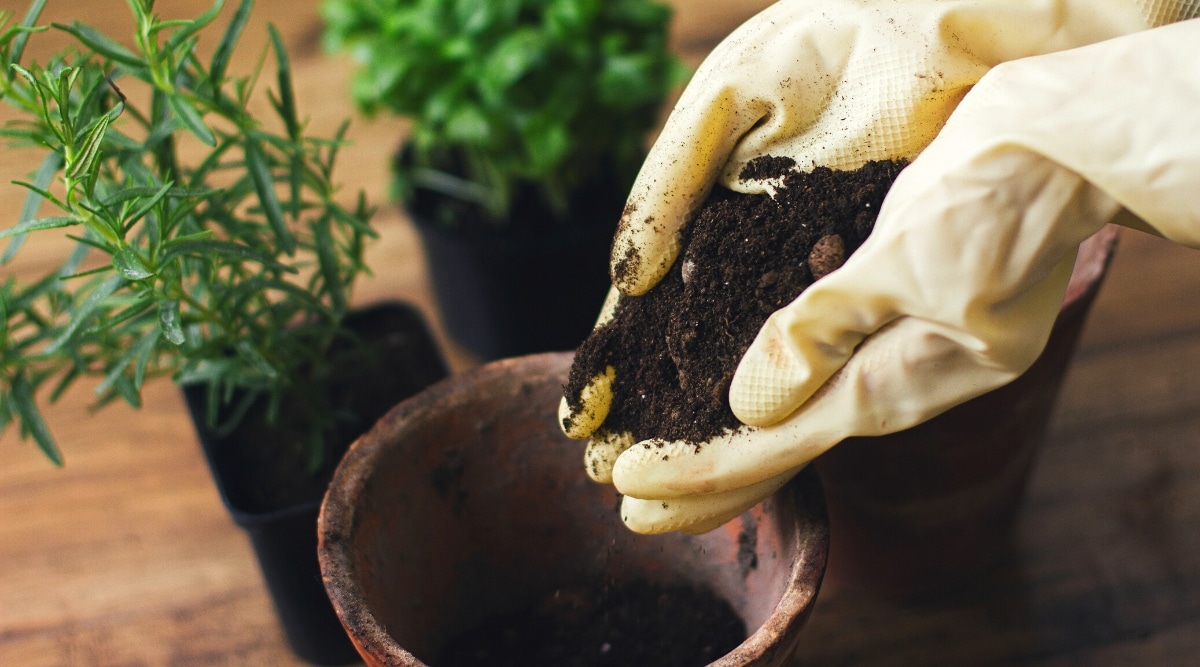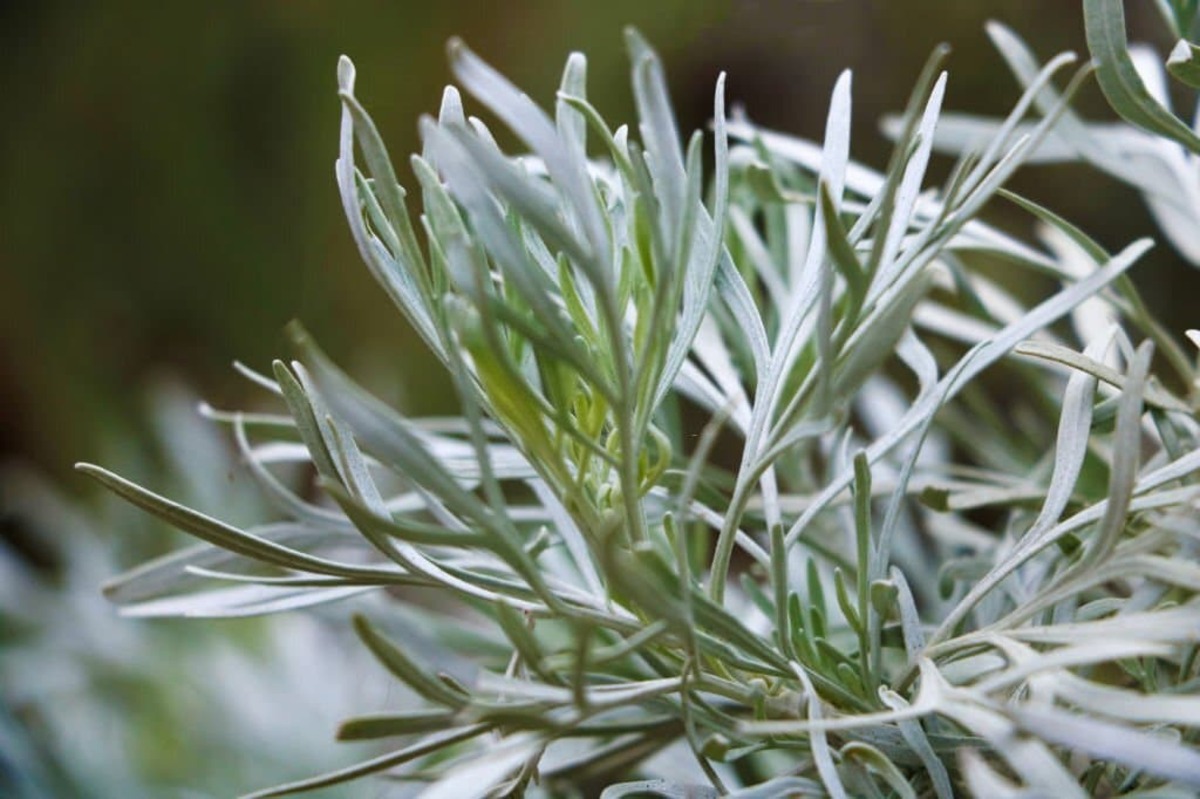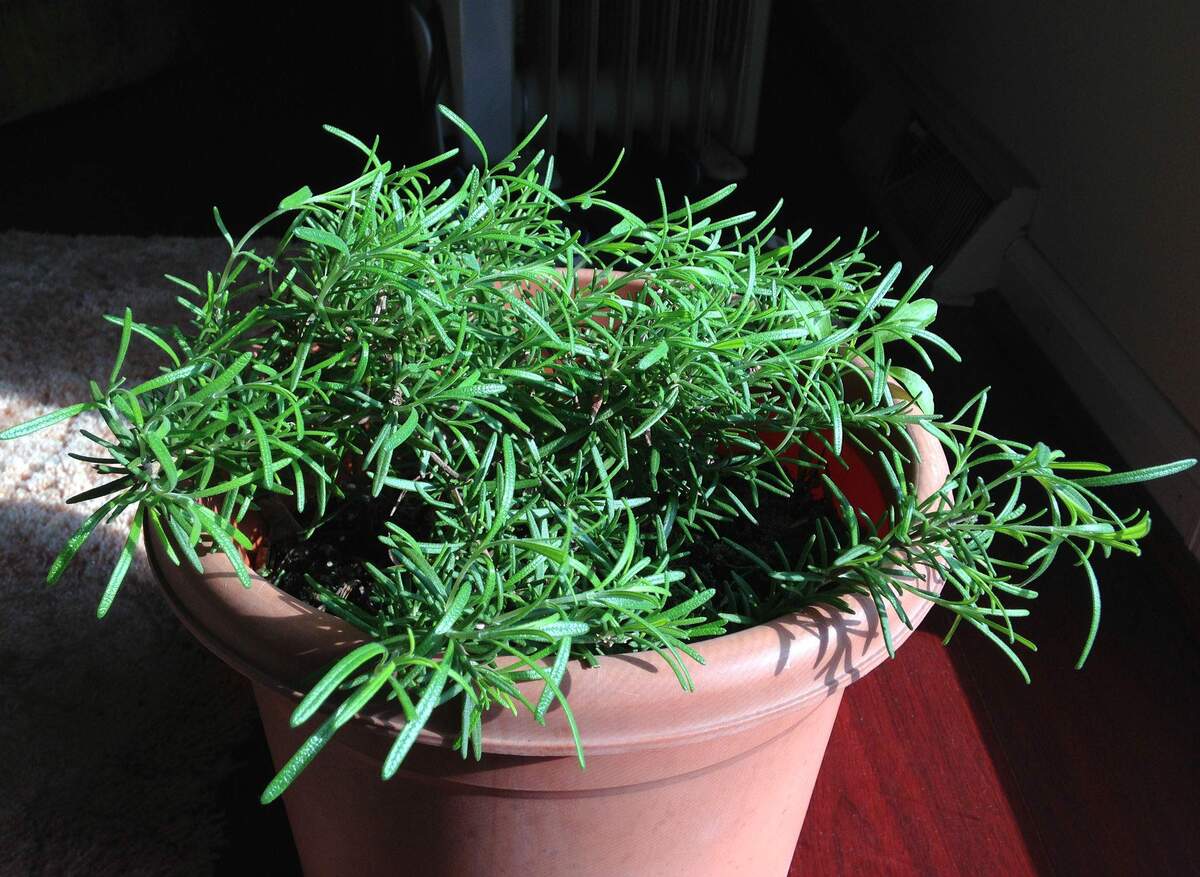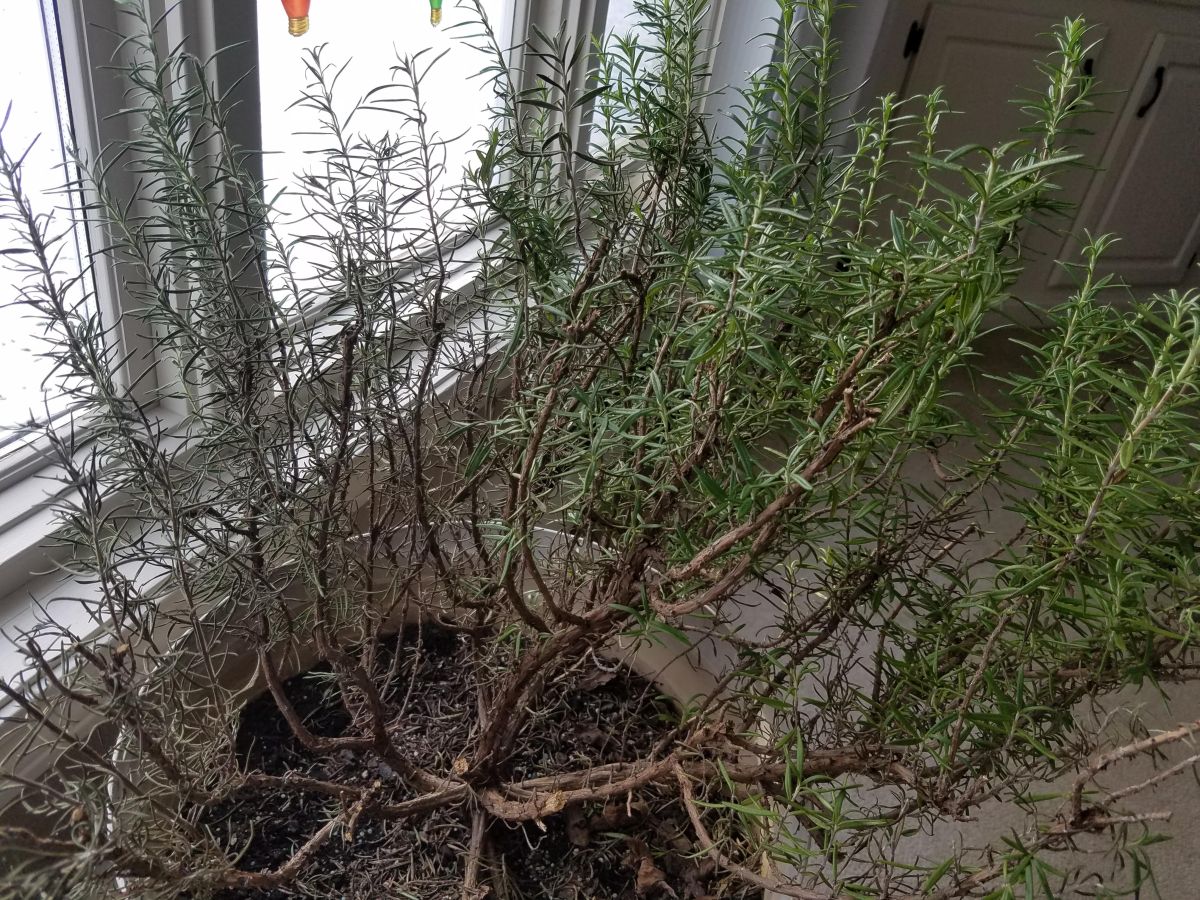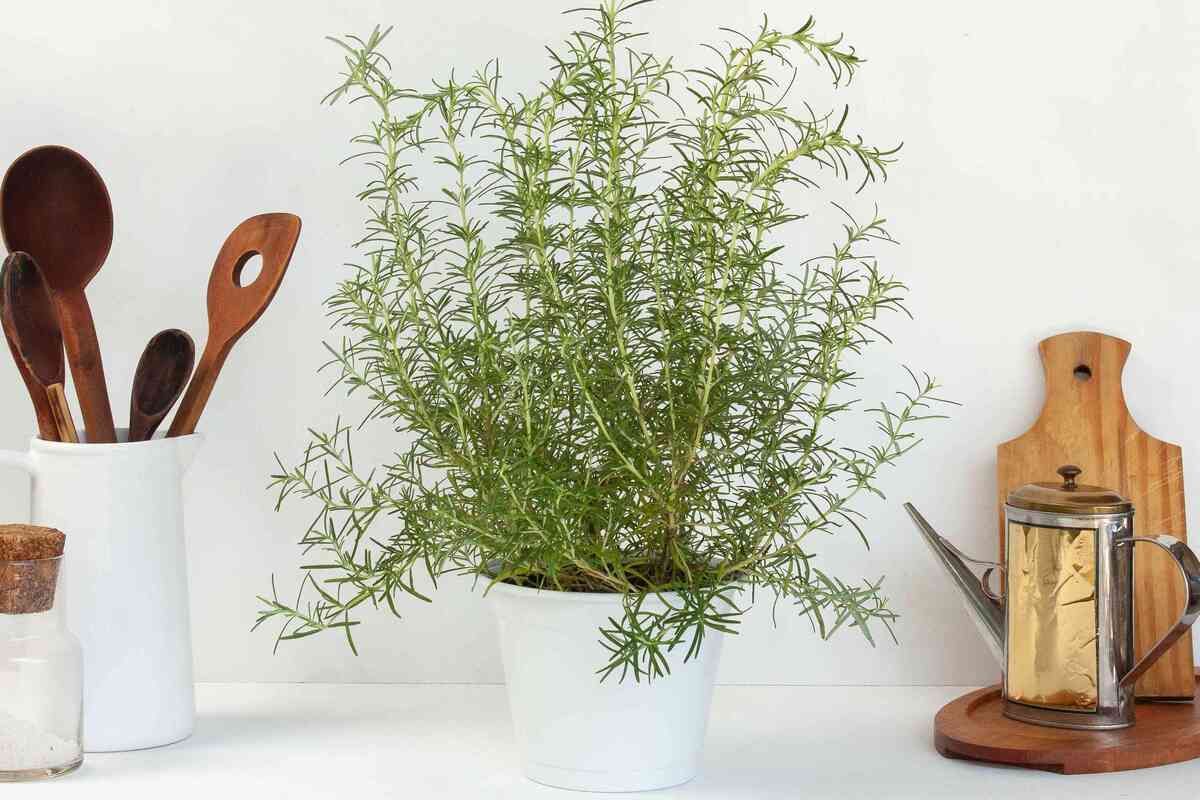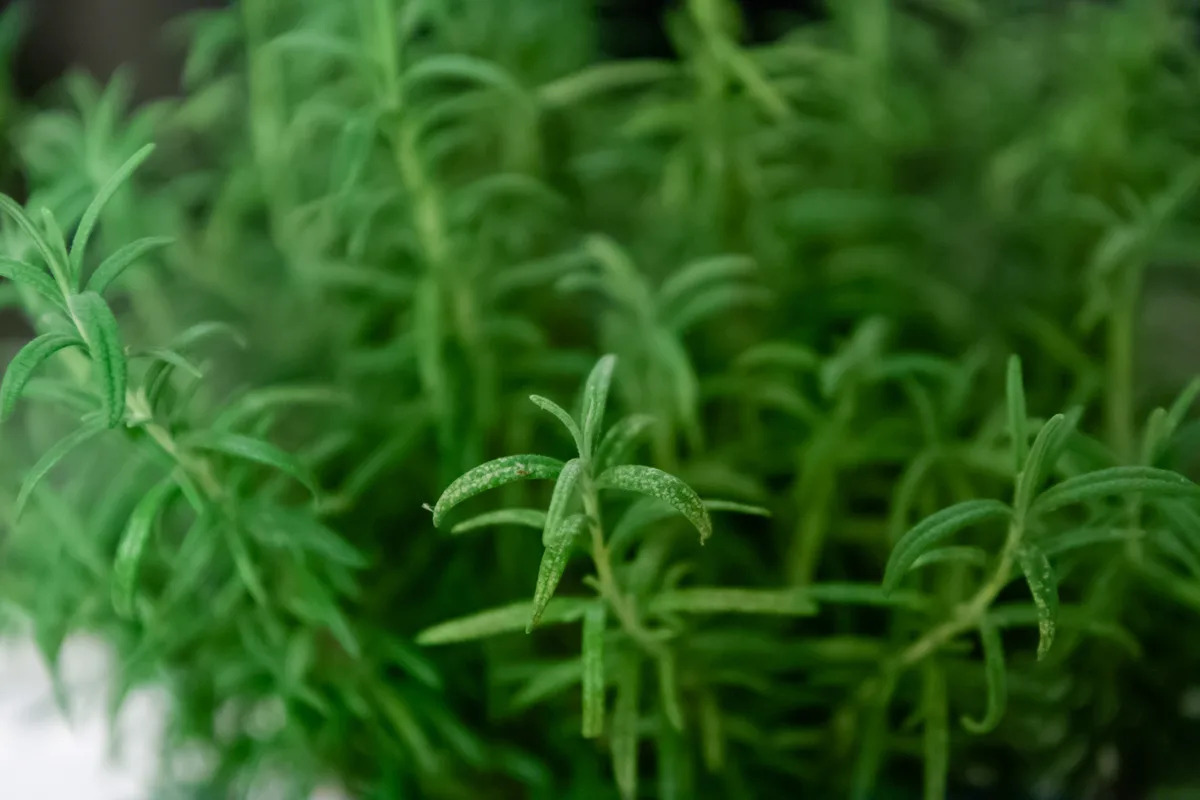Home>Types of Gardening>Edible Gardening>Where To Plant A Rosemary?


Edible Gardening
Where To Plant A Rosemary?
Modified: February 7, 2024
Discover the ideal location to plant rosemary for your edible gardening needs. Find out how to foster growth and ensure a thriving herb garden.
(Many of the links in this article redirect to a specific reviewed product. Your purchase of these products through affiliate links helps to generate commission for Chicagolandgardening.com, at no extra cost. Learn more)
Table of Contents
Introduction
When it comes to growing rosemary, choosing the right planting location is crucial for its success. Rosemary, a fragrant herb often associated with Mediterranean cuisine, thrives in sunny and warm conditions. Whether you have a large garden or limited space, there are a variety of outdoor and indoor planting locations that can accommodate this versatile herb.
Before deciding on a planting location for your rosemary, there are several factors to consider. First and foremost, rosemary requires full sun to thrive. It requires a minimum of six to eight hours of direct sunlight daily. Additionally, rosemary prefers well-drained soil with a pH level between 6 and 7.5. It is also important to consider the size of the plant, as rosemary can grow up to three to five feet tall and three to four feet wide.
In this article, we will explore different outdoor and indoor planting locations that are ideal for growing rosemary. Whether you have a backyard garden, a balcony, or even a small window sill, there is a planting location that will suit your needs. Let’s delve into the various options and find the perfect spot to plant your rosemary.
Factors to Consider when Choosing a Planting Location for Rosemary
Before selecting a planting location for your rosemary, it is essential to consider a few key factors. These factors will help ensure that your rosemary thrives and produces healthy foliage and aromatic leaves.
Firstly, as mentioned earlier, rosemary requires full sun to grow and flourish. It is a sun-loving herb that thrives in warm, sunny conditions. Therefore, choose a location in your garden or balcony that receives at least six to eight hours of direct sunlight every day. Lack of sunlight can result in stunted growth and a weaker plant.
The second factor to consider is soil drainage. Rosemary prefers well-drained soil to prevent root rot and other fungal diseases. Ensure that the planting location has soil that drains well and doesn’t retain excessive moisture. Sandy or loamy soil types are ideal for rosemary, as they provide good drainage.
In addition to sunlight and soil drainage, the pH level of the soil is important. Rosemary thrives in soil with a pH level between 6 and 7.5. You can test the soil pH using a home testing kit or consult a local garden center for assistance. If the soil pH is not within the ideal range, you can amend it by adding organic matter or adjusting with appropriate soil amendments.
The size and space requirements of rosemary are another consideration. This herb can grow up to three to five feet tall and three to four feet wide, so make sure you choose a planting location with enough space to accommodate its growth. Overcrowding can lead to poor air circulation, which can make the plant prone to diseases.
Lastly, consider the proximity to other plants and structures. Rosemary can be an excellent companion plant for certain vegetables, such as tomatoes, cabbage, and beans, as it repels pests. However, ensure that the planting location provides enough space between rosemary and other plants to avoid root competition and overshadowing.
By considering these factors, you can choose the ideal planting location for your rosemary and provide it with the optimal growing conditions. Remember to prioritize sunlight, well-drained soil, proper pH levels, sufficient space, and compatible neighbors when deciding on the perfect spot for your rosemary.
Outdoor Planting Locations for Rosemary
When it comes to outdoor planting locations for rosemary, there are various options to consider. Depending on your gardening preferences and available space, you can choose the most suitable option to cultivate this aromatic herb.
1. Garden Beds: One of the most common options is to plant rosemary in garden beds. Ensure that the bed is well-prepared with loose, well-drained soil and receives ample sunlight. Raised garden beds provide better drainage and can be especially beneficial if you have heavy clay or poorly draining soil.
2. Raised Beds or Containers: If you have limited space or poor soil conditions, consider planting rosemary in raised beds or containers. These elevated planting options allow you to have better control over the soil quality and drainage. Choose containers or raised beds that are at least 12 inches deep to accommodate the root system of rosemary.
3. Herb Gardens: Rosemary is a great addition to herb gardens. Plant it alongside other herbs like thyme, oregano, and sage, as they have similar growing requirements and complement each other in flavor and aroma. The proximity to other herbs can also create a favorable microclimate, providing some protection against extreme weather conditions.
4. Rock Gardens: If you have a rocky landscape or prefer a more naturalistic approach, consider planting rosemary in a rock garden. The well-draining nature of rocky soil, along with the heat-absorbing properties of the rocks, can create a perfect habitat for rosemary. It adds an attractive and aromatic element to your rock garden while blending seamlessly with other flowers and foliage.
5. Mediterranean or Dry Gardens: Rosemary is a staple in Mediterranean cuisine, and it thrives in dry and arid conditions. If you live in a hot and dry climate, creating a Mediterranean or dry garden is an excellent choice. These gardens often feature gravel or sandy soil, drought-tolerant plants, and a warm color palette. Rosemary will not only thrive in this setting but also contribute to the overall aesthetic appeal.
Choose the outdoor planting location that aligns with your gardening style and meets the requirements of rosemary. Ensure that the chosen spot receives abundant sunlight, has well-drained soil, and offers sufficient space for the herb to grow and spread. With the right outdoor planting location, you can enjoy the fragrant aroma and culinary benefits of fresh rosemary in your garden.
Garden Beds
Planting rosemary in garden beds is a classic and popular choice for many gardeners. It offers several advantages, including ample space for the herb to grow and easy access for maintenance and harvesting.
When choosing a garden bed for rosemary, make sure it is in a location that receives full sun for at least six to eight hours a day. Rosemary thrives in well-drained soil, so prepare the bed by loosening the soil and incorporating organic matter, such as compost or aged manure, to improve drainage and provide essential nutrients.
Consider the size and growth habit of rosemary when planning the garden bed. Rosemary plants can grow up to three to five feet tall and three to four feet wide, so space them accordingly to avoid overcrowding. Providing sufficient spacing between plants not only ensures proper air circulation but also prevents the spread of diseases.
Furthermore, consider planting rosemary along with other herbs or companion plants that have similar growing requirements. This can create a harmonious garden bed and result in a more productive and aesthetically pleasing herb garden. Good companion plants for rosemary include thyme, oregano, sage, and marjoram.
When planting rosemary in garden beds, it is crucial to monitor the soil moisture level. While rosemary prefers well-drained soil, it still needs regular watering to establish strong roots and promote growth. Water the plants deeply and infrequently, allowing the top inch of soil to dry out between waterings.
Prune your rosemary plants regularly to maintain their shape and encourage bushy growth. This will help prevent the plants from becoming woody and leggy. Harvesting rosemary regularly not only provides you with fresh herbs for cooking but also stimulates new growth.
In colder climates, protect your rosemary plants during the winter months by adding a layer of organic mulch around the base to insulate the roots. In regions with severe frost, you may need to bring potted rosemary indoors or cover the plants with a protective cloth during extreme cold spells.
Garden beds offer a versatile and convenient option for growing rosemary. They allow you to incorporate rosemary into your overall garden design and create a dedicated space for this flavorful and fragrant herb. Take advantage of garden beds to enjoy a bountiful harvest of rosemary throughout the growing season.
Raised Beds or Containers
Raised beds or containers are excellent options for growing rosemary, especially for gardeners with limited space or poor soil conditions. They offer better control over soil quality, drainage, and mobility, allowing you to create an ideal environment for your rosemary.
When choosing a raised bed or container for your rosemary, opt for a size that is at least 12 inches deep. This will provide ample space for the plant’s roots to grow and spread. You can choose from a variety of materials, including wood, plastic, or even repurposed items like half barrels or troughs.
The advantage of raised beds or containers is that they allow you to customize the soil mix based on the specific needs of rosemary. Use a well-draining soil mix that consists of equal parts of compost, garden soil, and perlite or vermiculite. This will provide the necessary nutrients while maintaining good drainage.
Ensure that the raised bed or container is placed in a location that receives full sun. Rosemary requires a minimum of six to eight hours of direct sunlight daily to thrive and produce aromatic foliage. If your outdoor space doesn’t receive enough sun, consider placing the raised bed or containers in a sunny spot on your patio or balcony.
Water your rosemary plants thoroughly and allow the soil to dry out slightly between waterings. Overwatering can lead to root rot, so it is essential to strike a balance and avoid excessive moisture retention in the raised bed or container. Monitor the moisture level by checking the top inch of soil and adjust your watering accordingly.
One advantage of containers is their mobility. You can easily move them around to make the most of sunlight or protect your rosemary from extreme weather conditions. If you live in a region with harsh winters, consider bringing potted rosemary indoors or provide them with additional protection during cold spells using frost blankets or cloths.
Regularly prune your rosemary plants to maintain their shape and encourage bushier growth. Harvesting the foliage regularly not only provides fresh rosemary for culinary uses but also stimulates new growth and keeps the plants compact and healthy.
Whether you choose a raised bed or containers for your rosemary, they offer convenience, flexibility, and a specific environment tailored to the needs of the herb. Embrace the versatility of raised beds or containers to grow vibrant and flavorful rosemary in even the smallest of spaces.
Herb Gardens
Integrating rosemary into an herb garden is a wonderful way to create a diverse and harmonious planting space. This allows you to enjoy the delightful aroma and culinary benefits of rosemary while complementing it with other herbs that have similar growing requirements.
When planning an herb garden, choose a location that receives full sun, as rosemary thrives in bright and sunny conditions. Aim for at least six to eight hours of direct sunlight each day. If your garden experiences partial shade, ensure that the selected area still receives a significant amount of sunlight.
The soil in an herb garden should be well-drained and fertile. Make sure to amend the soil with compost or organic matter before planting to improve its structure and nutrient content. Rosemary can benefit from the addition of organic material, as it enhances soil moisture retention while maintaining good drainage.
Consider grouping rosemary with other herbs that have similar water and sun requirements. Good companion herbs for rosemary include thyme, oregano, sage, and marjoram. These herbs not only share the same growing conditions but also enhance each other’s flavors when used together in cooking.
When planting rosemary in an herb garden, provide adequate spacing to avoid overcrowding. This allows for proper air circulation, preventing the spread of diseases and reducing competition for nutrients and sunlight. Consider the mature size of rosemary plants and plan accordingly.
Herb gardens require regular maintenance to keep the plants healthy and productive. Water your herb garden deeply, but infrequently, allowing the soil to dry out between watering sessions. Avoid overwatering, as excessively moist soil can lead to root rot and other issues.
Pruning is an essential aspect of herb garden maintenance, and rosemary benefits greatly from regular trimming. Prune the plants to maintain their shape and encourage bushier growth. Regular harvesting of rosemary not only provides fresh herbs for culinary use but also stimulates new growth.
Protect your rosemary plants in colder regions by adding a layer of organic mulch around the base to insulate the roots during winter. Alternatively, you can grow rosemary in pots within the herb garden, making it easier to bring them indoors during the colder months.
Herb gardens offer a convenient and aesthetically pleasing way to grow a variety of herbs, including rosemary. Embrace the diversity of an herb garden and enjoy the benefits of fresh, flavorful herbs for all your culinary endeavors.
Rock Gardens
Creating a rock garden is an excellent option for incorporating rosemary into your landscape while adding a touch of natural beauty. Rosemary thrives in well-drained soil, making it a perfect fit for the rocky and well-drained environment of a rock garden.
When planning a rock garden for rosemary, select a location that receives full sun. Rosemary requires a minimum of six to eight hours of direct sunlight daily to flourish. The rocks in the garden help absorb and retain heat, creating a warm microclimate that is beneficial to the herb.
The type of rocks used in the garden can vary, ranging from large boulders to smaller stones. Ensure that the rocks are arranged in a visually pleasing way, providing pockets or crevices where you can plant the rosemary. The rocks also assist in creating good air circulation and preventing soil erosion.
Prepare the soil in the rock garden by incorporating sand or gravel to enhance drainage. Rosemary prefers well-drained soil, and the addition of these materials helps achieve that ideal growing condition. Avoid heavy clay soils or areas prone to waterlogging, as they can lead to root rot and other issues.
When planting rosemary in a rock garden, ensure that the soil around the roots is well compacted to provide stability. Plant the rosemary in the crevices or gaps between the rocks, ensuring that the roots have contact with the soil. Add a layer of mulch around the base of the plants to conserve moisture and suppress weed growth.
Rock gardens often have a drought-tolerant character, as they mimic the natural environment of rocky landscapes. Therefore, water your rosemary sparingly and only when the soil is dry. Overwatering can be detrimental to the plant’s health, leading to root rot and other moisture-related issues.
Pruning your rosemary plants in the rock garden is essential for maintaining their shape and encouraging bushier growth. Regular harvesting of the rosemary leaves not only provides fresh herbs for culinary use but also helps stimulate new growth and keeps the plants compact and healthy.
Rock gardens offer a unique and visually appealing way to grow rosemary. The combination of rocks, well-drained soil, and full sun creates an ideal environment for this aromatic herb. Embrace the beauty of a rock garden and enjoy the fragrance and culinary benefits of fresh rosemary in your landscape.
Mediterranean or Dry Gardens
Rosemary is a quintessential herb of Mediterranean cuisine, making it a perfect addition to a Mediterranean or dry garden. These types of gardens emulate the hot and arid conditions found in Mediterranean climates, providing an ideal environment for rosemary to thrive.
In a Mediterranean or dry garden, the focus is on low-maintenance, drought-tolerant plants that can withstand periods of little to no rainfall. Rosemary, with its ability to tolerate dry conditions, fits seamlessly into this landscape.
When creating a Mediterranean or dry garden, select a location that receives full sun for optimal growth. Rosemary requires a minimum of six to eight hours of direct sunlight each day to flourish. Choose an area with well-drained soil, as excessive moisture can be detrimental to the health of rosemary plants.
The soil in a Mediterranean or dry garden tends to be sandy or gravelly, providing excellent drainage. If your soil is heavy or has poor drainage, consider amending it with sand or gravel to improve its structure. This will help prevent waterlogged conditions that can lead to root rot.
Group rosemary with other plants that are native to Mediterranean regions, such as lavender, thyme, sage, and succulents. These plants have similar water and sun requirements, creating a cohesive and visually appealing garden. The combination of these plants also fosters a microclimate that protects against extreme weather conditions.
Water your rosemary sparingly in a Mediterranean or dry garden. These gardens are designed to be low-water landscapes, mimicking the natural conditions of the Mediterranean. Allow the soil to dry out between watering sessions, as rosemary prefers slightly dry conditions. Overwatering can result in weakened growth and decreased vigor.
Prune your rosemary regularly to maintain its shape and encourage bushier growth. Regular harvesting of the aromatic leaves not only provides fresh herbs for culinary use but also stimulates new growth and keeps the plants compact and healthy.
In cooler and frost-prone regions, protect your rosemary plants in a Mediterranean or dry garden from freezing temperatures. You can cover them with frost blankets or move potted rosemary indoors during the winter months to ensure their survival.
Mediterranean or dry gardens offer a beautiful and low-maintenance setting for growing rosemary. With their sandy soil, ample sunlight, and minimal watering requirements, these gardens create the perfect environment for this herb to flourish. Embrace the charm and simplicity of a Mediterranean or dry garden and enjoy the aromatic delights of fresh rosemary.
Indoor Planting Locations for Rosemary
If you don’t have access to outdoor space or if you live in a region with harsh winters, growing rosemary indoors is a fantastic option. With the right conditions, you can cultivate healthy and thriving rosemary plants right in the comfort of your home.
1. Pots or Containers: Growing rosemary in pots or containers is a popular choice for indoor gardening. Choose a pot with good drainage and at least 12 inches in diameter to accommodate the plant’s root system. Use a well-draining potting mix that consists of equal parts of compost, sand, and perlite or vermiculite.
2. Hanging Baskets: If you’re short on space, consider planting rosemary in a hanging basket. These baskets can be hung near a sunny window or even in a sunroom. Ensure the basket has good drainage and use a lightweight potting mix to avoid weighing it down. Hanging baskets add a decorative touch to your indoor space while allowing the rosemary to cascade gracefully.
3. Window Sills: Utilizing window sills is an excellent way to maximize sunlight for your indoor rosemary. Place potted rosemary directly on a south-facing windowsill, where it can receive at least six to eight hours of direct sunlight each day. Rotate the pot occasionally to ensure all sides of the plant receive equal exposure to sunlight.
Indoor rosemary requires bright, direct sunlight to thrive, so make sure it is placed in the sunniest spot possible. Supplemental light can be provided using grow lights if necessary, especially during winter months when natural sunlight may be limited.
Ensure that the indoor location has a consistent temperature between 60-75°F (15-24°C). Rosemary prefers a moderate and stable temperature, so avoid placing it near drafty windows, vents, or heat sources.
Water your indoor rosemary plants sparingly, allowing the top inch of soil to dry out between waterings. Overwatering can lead to root rot, so it is essential to exercise caution. Remember that indoor environments are typically drier, so strive to maintain a balance between providing enough moisture without causing waterlogged conditions.
Pruning is important for maintaining the shape and compactness of indoor rosemary. Regularly trim the plant to promote bushier growth and prevent it from becoming leggy. Harvesting the aromatic leaves for culinary use is a delightful way to enjoy the benefits of your indoor rosemary.
If you live in a particularly cold region, protect your indoor rosemary from cold drafts by keeping it away from windows during the winter months. Alternatively, you can move potted rosemary outdoors during mild seasons and bring it back inside when temperatures drop.
Indoor planting locations offer convenience and year-round access to fresh rosemary. Whether in pots, hanging baskets, or on window sills, your indoor rosemary will provide you with aromatic foliage for culinary delights anytime you need it.
Pots or Containers
Growing rosemary in pots or containers is a popular and practical choice for indoor gardening. It allows you to bring the beauty and fragrance of this versatile herb indoors while providing the flexibility to move the plants as needed. Pots and containers can be placed on windowsills, countertops, or even as part of a decorative indoor herb garden.
When selecting a pot or container for your indoor rosemary, choose one with good drainage to prevent waterlogging. Ensure that it has drainage holes at the bottom to allow excess water to escape. A pot with a diameter of at least 12 inches is ideal, as it provides enough space for the root system and allows for proper growth.
Use a well-draining potting mix that is specially formulated for herbs or vegetables. It should consist of equal parts compost, sand, and perlite or vermiculite. The mixture provides both essential nutrients and ensures proper drainage, preventing the roots from sitting in water and potentially rotting.
Place the pot or container in a location that receives at least six to eight hours of direct sunlight each day. Position it near a south-facing window or supplement with grow lights if natural sunlight is limited. Rotate the pot occasionally to ensure even exposure to sunlight on all sides of the plant.
Since indoor environments tend to have lower humidity levels, monitor the moisture levels in the potting mix. Water your rosemary sparingly, allowing the top inch of soil to dry out before watering again. Stick your finger into the soil to check the moisture level, as overwatering can lead to root rot. Remember that it’s better to underwater than overwater rosemary.
Pruning is an essential part of maintaining the health and shape of your indoor rosemary plant. Regularly trim the branches to promote bushier growth and discourage leggy and straggly stems. Pruning also encourages the production of new, flavor-packed foliage for your culinary needs.
Harvesting your indoor rosemary not only provides you with fresh herbs but also keeps the plant compact and encourages new growth. Start harvesting when the plant has reached a height of 6 to 8 inches, taking care not to remove more than one-third of the plant at a time.
If your region experiences cold winters, consider protecting your indoor rosemary from cold drafts. Keep it away from drafty windows, and avoid placing it near heating vents or radiators. Maintaining a stable temperature between 60-75°F (15-24°C) is crucial for the plant’s well-being.
Growing rosemary in pots or containers indoors gives you the freedom to enjoy this aromatic herb year-round. With proper care and attention, your indoor rosemary will provide you with fresh, flavorful leaves to enhance your culinary creations, bringing the essence of the outdoors into your home.
Hanging Baskets
Growing rosemary in hanging baskets is a creative and space-efficient way to cultivate this aromatic herb indoors. Hanging baskets not only add a decorative touch to your living space but also allow you to maximize sunlight exposure for your rosemary plants.
When choosing a hanging basket for your indoor rosemary, opt for one that has sufficient drainage holes to prevent waterlogging. Consider using a lightweight basket, as it will be easier to hang and reduce stress on your ceiling or hooks. Ensure the basket is appropriately sized to accommodate the root system and allow for proper growth.
Select a well-draining potting mix that is specifically formulated for container gardening. This mix should consist of equal parts compost, perlite or vermiculite, and coarse sand. The lightweight and porous nature of the mix promotes adequate drainage while ensuring necessary water and nutrient retention for the rosemary plants.
Hang the basket near a sunny window or in a location where your rosemary plants can receive at least six to eight hours of direct sunlight each day. Rosemary thrives in full sun, so maximize exposure to natural light whenever possible. If your space doesn’t receive enough sunlight, you can supplement with grow lights to ensure proper growth and development.
Water your hanging baskets as needed, allowing the top inch of soil to dry out between waterings. Be cautious not to overwater, as excess moisture can lead to root rot. Check the moisture level by inserting your finger into the soil. If it feels dry to the touch, it’s time to water. Remember that hanging baskets tend to dry out faster than ground-based containers.
Prune your rosemary plants in the hanging baskets regularly to maintain their shape and prevent leggy growth. Trimming the branches not only promotes bushier growth but also encourages the production of fresh, aromatic leaves. Harvesting the rosemary leaves regularly for culinary use helps stimulate new growth and keeps your plants healthy and productive.
Consider the weight of your hanging basket and choose appropriate hooks or brackets to secure it to your ceiling or wall. Ensure the hanging system can support the weight of the basket when filled with potting mix and mature rosemary plants. It’s essential to hang the basket at a height that allows for easy access for maintenance, watering, and harvesting.
Protect your indoor rosemary from cold drafts by avoiding placing the hanging basket near windows or doors that may let in chilly air. Rosemary prefers a stable temperature between 60-75°F (15-24°C), so keep it away from heating vents or radiators as well.
Hanging baskets offer a charming and space-saving option for growing rosemary indoors. They allow you to enjoy the beauty and fragrance of this versatile herb while adding an aesthetic touch to your living space. Embrace the versatility of hanging baskets and experience the joy of having fresh rosemary at your fingertips.
Window Sills
Utilizing window sills is an excellent way to make the most of natural light and create a perfect spot for growing rosemary indoors. Placing potted rosemary on window sills not only allows for maximum sunlight exposure but also adds a touch of greenery and fragrance to your living space.
Select a south-facing window sill, as it provides the brightest and longest duration of sunlight throughout the day. Ideally, the chosen window should receive at least six to eight hours of direct sunlight for optimal growth and development of the rosemary plants.
When choosing pots for your window sill, consider the size of the available space. Opt for pots that fit comfortably on the sill and do not obstruct the opening and closing of windows. Ensure that the pots have proper drainage holes at the bottom to prevent water accumulation and potential root rot.
Use a well-draining potting mix specifically formulated for herbs or container gardening. This type of mix ensures adequate water drainage while providing essential nutrients for the rosemary plants. You can also add a thin layer of stones or pebbles at the bottom of the pot to enhance drainage.
Place the pots on the window sill, ensuring they receive maximum sunlight exposure. Rotate the pots occasionally to prevent uneven growth caused by one-sided light exposure. This will help the rosemary plants grow evenly and maintain a balanced shape.
Water your rosemary plants sparingly, allowing the top inch of soil to dry out between waterings. Overwatering can lead to root rot and other moisture-related issues. It’s important to strike the right balance, providing enough moisture for the plants without causing waterlogged conditions.
Prune your rosemary regularly to maintain its shape and encourage bushier growth. Regular harvesting of the aromatic leaves for culinary use not only provides you with fresh herbs but also stimulates new growth and keeps the plants compact and healthy.
Monitor the indoor temperature and ensure it remains within the suitable range of 60-75°F (15-24°C) for rosemary. Avoid placing the pots directly on a drafty windowsill, as cold air can harm the plants. Maintain a stable indoor temperature to help the rosemary thrive.
Enhance the visual appeal of your window sill by grouping rosemary with other herbs or small potted plants. This not only adds variety and interest but also creates a mini indoor herb garden, giving you easy access to fresh herbs for cooking.
Utilizing window sills is a practical and convenient way to grow rosemary indoors. With ample sunlight and proper care, your window sill rosemary plants will provide you with a steady supply of fragrant foliage to enhance your culinary creations and bring the outdoors closer to your living space.
Conclusion
Growing rosemary can be a rewarding experience, whether you have outdoor space or prefer indoor gardening. By considering factors such as sunlight, soil drainage, and available space, you can choose the ideal planting location for your rosemary plants.
Outdoor planting options like garden beds, raised beds or containers, herb gardens, rock gardens, and Mediterranean or dry gardens offer diverse choices to suit various preferences and landscapes. Each option provides an opportunity to create a thriving habitat for rosemary, enhancing the beauty and functionality of your outdoor space.
For indoor gardening, pots or containers, hanging baskets, and window sills offer innovative ways to grow rosemary within the comfort of your home. These options maximize sunlight exposure and space utilization while adding decorative elements to your living environment.
Regardless of the planting location you choose, ensure that your rosemary receives sufficient sunlight, well-drained soil, and proper spacing. Regular pruning and harvesting will maintain the health and vigor of your rosemary plants, ensuring a bountiful supply of aromatic leaves for your culinary adventures.
Remember to adjust watering practices based on the specific needs of your rosemary plants, as overwatering can be detrimental to their health. Protect them from extreme weather conditions and provide a suitable indoor environment, including stable temperatures and adequate light sources.
Whether you choose to grow rosemary outdoors or indoors, it is an herb that can bring flavor, fragrance, and beauty to your space. Experiment with different planting locations and enjoy the delights of fresh rosemary in your home-cooked meals.
So, get started on your rosemary gardening journey and let this versatile herb add a delightful touch to your edible garden or indoor space. Happy planting!
